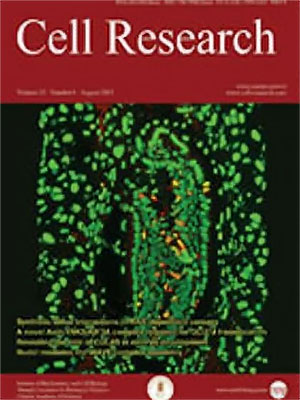Volume 11 Issue 4, December 2001: 293-300
ORIGINAL ARTICLES
High IFN-α expression is associated with the induction of experimental autoimmune uveitis (EAU) in Fischer 344 rat
Yong Jun, Lei ZANG, Ya Di WU, Bing SUN*
Laboratory of Molecular Immunology, Institute of Biochemistry and Cell Biology, Shanghai Institutes for Biological Sciences, Chinese Academy of Sciences, Shanghai 200031, China
Correspondence:
Th1-response plays a crucial role in
determining pathogenesis of organ-specific autoimmune diseases. It is believed
that both IL-12 and INF-
a are initiators to regulate
Th1- response. In our experimental autoimmune uveitis (EAU) model, both Lewis
and Fischer 344 rats share the same MHC class II molecules, while Lewis rat is
EAU susceptible and Fischer 344 rat is EAU resistant. However, under the same
condition of immunization, if pertussis toxin (PTX) was injected
intraperitoneally as an additional adjuvant, Fischer 344 rat can develop EAU. In
this study we investigate which mechanisms are involved in the induction of EAU
in CFA+R16+PTX-treated (CRP-treated) Fischer 344 rats.
In vivo and
in
vitro data demonstrated that Th1-cytokine, IFN-
g mRNA expression was significantly increased in disease target tissue-eyes and in
draining lymph node cells of CRP-treated Fischer 344 rat. When IL-12 and IFN-
a mRNA expression were compared in the experimental groups, only IFN-
a mRNA expression was associated with EAU development. To distinguish the sources
of IFN-
a producing cells, it was observed that IFN-
a expression was mainly produced by macrophages. It was further confirmed that
normal macrophage from Fischer 344 rat was able to produce significant IFN-
a in the presence of PTX. The data strongly suggested that IFN-
a might be involved in initiating Th1-cell differentiation and in turn contribute
to the induction of EAU. High IFN-
a expression
induced by PTX may represent a novel pathway to initiate Th1 response in Fischer
344 rat.
FULL TEXT | PDF
Browse 2626


